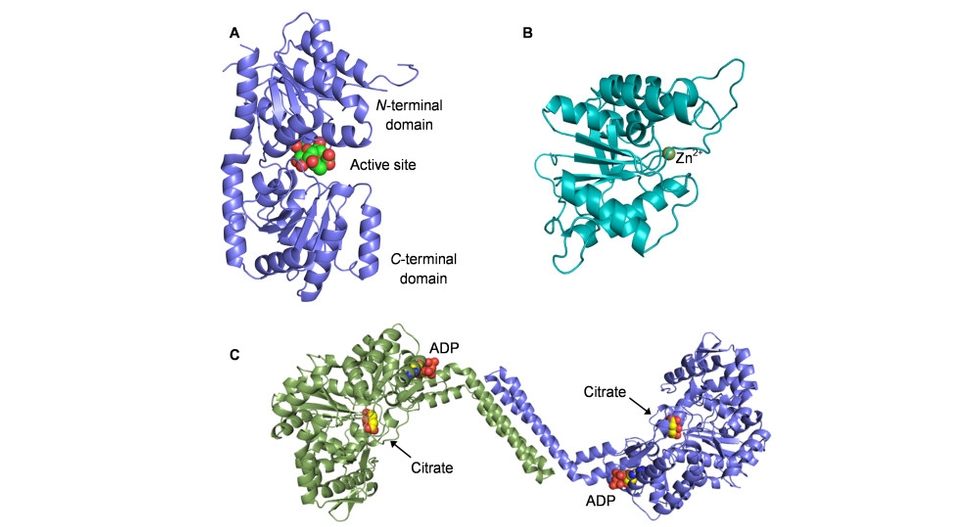Paul Cook Research Interests
Research in the Cook Lab
Enzymes are the workhorses of the cell. They catalyze a staggering array of chemical reactions, enabling them to occur on timescales much shorter than comparable uncatalyzed reactions. Studying enzymes, therefore, is an important scientific endeavor that illuminates cellular processes and the forces that drive life.
The core of my research is in structural and functional enzymology. That is, I study structural features of enzymes and how they carry out their chemical reactions. My current research interests include bacterial sugar-modifying enzymes that are involved in antibiotic resistance. The ultimate goal of my research is to help find new avenues to combat antibiotic resistance, an ever-growing concern in modern medicine.
[1530639340].jpg)
The bacillithiol biosynthesis pathway
Bacillithiol (BSH) is a low-molecular weight antioxidant produced by several species of Gram positive bacteria, including many human pathogens like Bacillus anthracis and Staphylococcus aureus. The compound is involved in maintenance of redox homeostasis and several cellular detoxification processes, including degradation of the FDA-approved antibiotic fosfomycin.
The goal of our research is to study the structures and functions of enzyme involved in the production and utilization of bacillithiol. This knowledge will expand our understanding of the mechanism, structure, and evolution of these enzymes. A thorough understanding of these enzymes will answer basic biochemical questions and give direction to further the design and characterization of inhibitors that can be used to combat microbial resistance to the antibiotic fosfomycin.

Bacillithiol biosynthesis enzyme structures determined by the Cook lab via X-ray crystallography.
A: BshA, B: BshB, C:BshC
Bacillithiol-related publications from the Cook lab
*Winchell et al BshA publication in the journal Biochemistry (2016).
*VanDuinen et al BshC publication in the journal Biochemistry (2015).
*Francis et al BstA publication in the journal Protein Science (2018).
*Royer et al publication in Biochemistry (2019)
*Woodward et al publication in Protein Science (2020)
*McHugh et al publication in Acta Crystallographica (2022)
